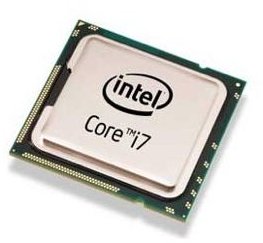What is the Role of the CPU? Inside Your Central Processing Unit
To understand the basic functionality of a CPU, it is best advised to understand the meaning of the abbreviation — CPU. It stands for Central Processing Unit and is physically present in the form of a single powerful chip attached to the mainboard of a PC. A CPU can be thought of as the area of intellect within a PC or its central intelligence. Every computer function is carried out in the form of complex mathematical codes. It is the CPU that calculates the accuracy and functionality of these codes and enables a computer to execute instructions.
This is why retail stores that deal in computer and related hardware stress highlighting the brief information that is provided on the software packaging, telling customers about the basic (minimum) processing power (derived from the CPU) that would be needed to run various software. The primary function of all CPUs is to execute various sets of stored instructions that are commonly referred to as a computer programs.
The CPU is able to do this by following a four-step operational process. The first operation is called Fetch where the CPU reads an instruction from the PC’s main memory. Sometimes fetching also includes reading data from an I/O module. This is followed by Decode or the interpretation phase where the instruction is decoded to decide what sort of action should be carried out. Next comes Execute, wherein the actual desired operation is carried out. The last CPU process is called Writeback, where the data of an executed task is analyzed and results are written to memory or I/O modules.
Every CPU has its own Cache Memory. This can be understood as a limited amount of memory that is offered by the CPU itself. The Cache memory can be added to the PC hardware and is usually very expensive — hence, it has limited presence in standard retail PCs. This cache performs the role of acting as storage for repeated functions and data that are required by the CPU regularly. This means that the CPU wouldn’t have to depend on retrieving data from the PC’s main memory.
Within the CPU, there are many Registers that function above the memory offered by the PC’s main memory or its own cache. These registers perform some very important functions. The most important type of register is the user-visible type. It helps to decrease the memory load on the PC by allowing assembly-language programmers to minimize the number of main memory references that have to be made.
Computer manufacturers have realized that a PC’s performance gets a major boost if a computer is using more than one CPU. This is why dual-core and multi-core processing units have become the norm. Industry giants Intel and AMD lead the way in multiple core processor technology.
This configuration has significantly improved the performance level of computers. As a result of multi-core CPUs, larger and more complex applications can be written that utilize a much larger code base and offer more features than ever before. New applications and games are utilizing the available horsepower of the new processors, and will be the driving force behind the next generation of CPUs.
